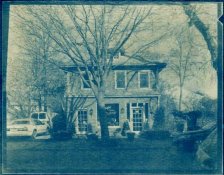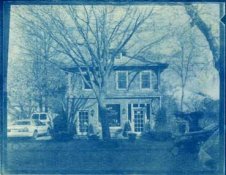DBP
Member
I was experimenting with tea toning yesterday and today and decided to try belaching with either bleach or ammonia. Rather than mess up some good prints, I started with some badly overexposed prints that had been printed from a negative with too little density range for a Cyanotype. And I couldn't find the ammonia bottle, so I grabbed some window glass cleaner (containing ammonia and isopropyl, plus ingredients unknown) and mixed it roughly 1:3 with water. Shortly after I put the prints in, I noticed that the lighter areas were bleaching out faster than the darker, restoring the contrast to normal. I think I have recovered several prints this way now, though all have gone a bit purple. Will post some scans when they dry.







